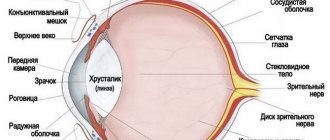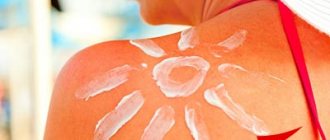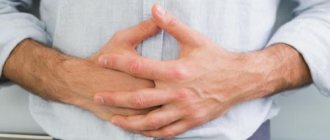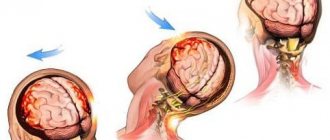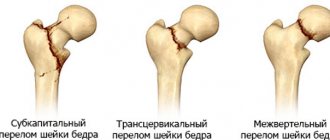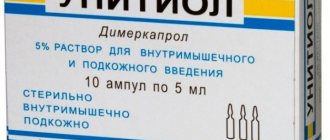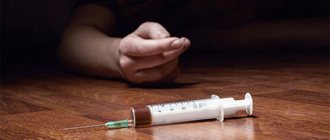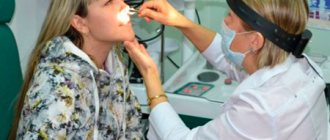A 2nd degree burn is easily recognized by its typical appearance. Damage to the epidermis and underlying dermis causes redness and swelling, and impaired permeability and dilation of capillaries leads to the formation of thin-walled blisters filled with translucent fluid. Blisters usually form on the skin immediately after an injury. After they burst, a bright red wound remains in their place, which usually heals within 10-12 days.
Second degree burns do not damage the germ layer of the skin, so they are classified as superficial injuries. Correct and timely treatment of such burns promotes spontaneous restoration of the skin without scarring.
With a small affected area, treatment of 2nd degree burns can be successfully carried out at home. At the same time, in order not to introduce an infection that could aggravate the victim’s condition, special care must be taken. If the burn results in a large number of blisters, covers more than 10% of an adult's body and more than 2% of a child's body, or affects areas such as the face, groin or hands, you should go to a medical facility.
Second-degree burns cause severe burning pain and, with significant damage, can lead to the development of burn shock and burn disease. These serious complications are an indication for hospitalization of the victim. To find out what percentage of the area of burns on the human body occupies, measurements are carried out using the rule of nines.
First aid
Emergency care for second-degree burn injuries begins with cooling the affected surface. This measure will stop tissue damage, which continues to heat up for several minutes after receiving a burn. To cool the wound, you can apply ice to the skin or place the affected area under running water. So that the water pressure does not increase pain, it must be weak. How many minutes should this procedure last? Until a feeling of numbness appears. This usually happens within 15-30 minutes.
After cooling, apply a sterile dressing to the burn. To reduce pain and easily carry out further treatment of the burn, gauze pads and bandages can be moistened in a solution of novocaine. It is not recommended to use cotton wool as a sterile material, as it can become an unnecessary source of irritation for damaged skin.
Emergency care necessarily includes an anesthesia procedure. At home, you can use any over-the-counter drug as anesthesia, for example, paracetamol or analgin. In more severe cases, it is recommended to take drugs that have not only analgesic but also anti-inflammatory effects, for example ketoralac, ketorol, ketanov.
Thermal burn
The most common type of burn injury is formed under the influence of high temperature: hot water, boiling oil, fire, hot objects. The main area of damage is the skin, but the respiratory tract (when in a room with elevated temperatures), the stomach and larynx (when consuming very hot drinks or food), organs of vision, and mucous membranes can be affected.
It is thermal types of burns that are divided into four distinct degrees, each of which is characterized by certain damage. If you receive a grade 3-4 injury, the victim must be hospitalized. The second degree, with a large area of damage of 9% of the body or more, also requires specialist intervention.
The degrees are distinguished as follows:
- 1st degree is superficial. The skin turns red, there are no blisters.
- At stage 2, bubbles filled with liquid appear - blisters.
- Grade 3 is characterized by partial death of skin areas - necrosis.
- At degree 4, not only the epidermis is damaged: the burn goes deeper, can reach the bone, and the skin becomes charred.
For any thermal burn, it is necessary to provide first aid to the victim to alleviate his condition. It is important not to touch the site of injury with your hands, apply antiseptic bandages and use products that promote rapid regeneration of the skin.
For first and second degree thermal burns, no special intervention is required. They heal on their own, with the exception of an infection brought into the area: this is why it is necessary to treat the area, and also not to burst the blisters yourself. It is difficult for tissues to fully recover in the third stage: after that, scars remain on the skin. The fourth is deep and requires skin grafting for restoration.
Treatment
Second degree burns usually heal without medical intervention. To accelerate tissue regeneration, it is recommended to use any anti-burn agent with panthenol. It is better to give preference to aerosols, the application of which does not involve hand contact with the affected area, which means that the risk of infection is reduced.
Victims are advised to continue taking analgesics, as well as antihistamines (suprastin, fenkarol, tavegil, claritin) and desogregants (ascorbic acid, clopidogrel, aspirin). For massive burns, painkillers should be administered intramuscularly or intravenously, since the absorption properties of the skin during injury are sharply reduced, and the effect of external medications is correspondingly reduced. In the presence of edema, drinking plenty of fluids is recommended to replenish the missing volume of circulating blood.
If the burn wound does not heal for a long time, the pain increases, or the fluid in the blisters becomes cloudy, you should contact a specialist who will correct the ineffective treatment. It should also be remembered that persons who have received burns whose area exceeds 10%, as well as victims with electrical burns and burns of internal organs of any area and location are subject to mandatory hospitalization. Elderly patients with concomitant diseases of the respiratory and cardiac systems are referred for inpatient treatment.
Classification of burns
Depending on what external factor causes a burn on the body, the following types are distinguished.
- Thermal burns. The cause is skin contact with a hot object, steam or liquid. In some cases, when a burn occurs, clothing sticks to the skin, causing the burning contact to last longer and lead to deeper damage to the soft tissue and dermis.
- Electrical burns. The reason is contact with exposed or faulty equipment wires, failure to comply with safety regulations when working with electrical appliances, lightning strikes, etc. An electrical burn can be complicated by respiratory arrest and clinical death.
- Chemical burns. Occurs due to skin contact with aggressive chemicals. The degree and depth of damage depends on how much of the substance reacted with the skin, what areas of the body were affected and how quickly first aid was provided.
- Sunburn. The reason is prolonged exposure of the skin to direct ultraviolet rays. You can get such a burn from improper tanning on the beach or in a solarium. The first signs of a burn are reddened skin (many consider this factor to be a sign that the tan is “taking on”). Continued exposure of the skin to ultraviolet light may cause blistering.
What should you not do if you have a burn?
- If a person receives an electric shock or is hit hard as a result of a fall, he may lose consciousness. Never move a person who has lost consciousness without checking his pulse and pupil reaction.
- Do not treat the burned area with random medications, especially if you are not sure of their purpose. There is no need to smear the skin with sour cream, because it creates an oily environment. Heat transfer and air supply are disrupted, and at the same time, bacteria actively multiply in a fatty environment at body temperature.
- Do not clean the surface unless there are new bandages. Don't use cotton wool.
- Don't put a bandage on someone unless you know how. You can't make it tight to avoid swelling. But you can’t leave it loose.
- Do not apply tourniquets if there are no wounds on the burned surface. The tourniquet provokes the death of cells, they are not restored. Incorrect tourniquets resulted in limbs having to be amputated.
- Do not pop blisters yourself.
- Do not remove clothing stuck to your skin.
Getting burns is always dangerous and has various consequences, but the ability to correctly and quickly help the victim will significantly reduce the risk of serious consequences.
What is a second degree burn?
The term burn in medicine refers to damage to the skin or mucous membranes that occurs after contact with high temperatures or certain chemicals. In the second degree of burn, the epidermis and dermis layer are affected, as a result of which the permeability of the capillaries is also impaired. All these changes, as well as the involvement of nerve endings in the process, cause burn symptoms:
- Redness and swelling of the injured area.
- The formation of bubbles containing liquid inside.
- The pain is of a burning nature. Sharp pain usually lasts two to three days, then its intensity gradually decreases.
Fluid blisters form on the body almost immediately after contact with high temperatures. After opening them, a reddish wound remains; it heals in about 10 days with the correct use of external medications.
The patient’s well-being also depends on the area of the burn. If it occupies less than 10% of the body, then healing occurs if the doctor’s recommendations are followed in the shortest possible time. For a child, a burn area of no more than 2% is considered safe.
Dangerous complications of a second degree burn can be burn disease or burn shock. Their development is facilitated by a significant area of skin damage, the formation of blisters on the entire burned surface, and injury to particularly sensitive areas of the body - the groin, face, and neck.
When is it necessary to provide first aid for a burn?
You can treat the burned area at home, on your own. There is no point in experimenting; only minor injuries need to be treated, for example when burned with boiling water. When the burn area reaches 5 centimeters, it is necessary to call doctors. You should also not treat blisters on your own. If a person feels extraneous pain, it means the infection has entered his body.
If a person's skin has been exposed to high temperatures for too long and the surface is charred, or if a significant portion of the skin is burned, the person must be hospitalized immediately.
Treatment of burns with folk remedies
1. Treatment with honey. The entire burn area must be lubricated with bee honey 2 times a day - morning and evening (at night).
The course of treatment is 4-7 days. 2. Mumiyo. Lubricate the affected areas with a 2-3% solution of mumiyo or an ointment prepared from it. At the same time, take 0.2-0.5 g orally (depending on body weight) once a day for 10 days with a break of 5 days. 3. Laundry soap. In case of household burns (boiling water, steam, iron, etc.), blisters, red spots remain on the body, and after healing, scars. All this can be avoided if immediately after a burn, dry the affected area (dry with a clean napkin) and immediately rub it with dry laundry soap (I emphasize - only dry and only laundry soap). In a few minutes you will forget about your trouble, and subsequently there will be no traces of it. 4. Kalanchoe. Take 1 or several fresh leaves of Kalanchoe, mash, and then apply to the affected areas. The compounds contained in the leaf pulp contribute to the rapid cessation of pain and healing. 5. Carrots. Apply finely grated carrots to the burned areas of the skin. 6. For first degree burns. These are burns that are red and painful. Such burns are moistened with vodka, cologne or a slightly pink solution of potassium permanganate. 7. For chemical burns. The affected surface (except burns with quicklime) is washed as quickly and abundantly as possible with tap water. In case of an acid burn, the affected area is washed with a solution of baking soda; in case of an alkali burn, the affected area is washed with a weak solution of citric acid. Removal of lime and treatment of burns is done with oil. In case of a burn with phosphorus (for example, from a flaming box of matches), you need to immerse the burned area in cold water for 10-15 minutes, then wipe it well, spread it with oil or lard and bandage it. If a person is scalded by steam, he should immediately be doused with cold water, and then carefully remove the clothes, cutting them with scissors, and remove them in parts.
Infusions
8. Infusion of survivor. 5 tbsp.
l. Brew crushed creeping herb with 1 liter of boiling water, leave for 4 hours and strain. Use for wiping and lotions for burns. 9. Cabbage infusion. Brew 50 g of chopped leaves and roots (1:1) with 600 ml of boiling water, leave for 4 hours, strain. Use to cleanse burns. 10. Infusion of dried dried fruit. Brew 50 g of crushed cudweed herb with 1 liter of boiling water, leave for 30 minutes. and strain. Use as a lotion on affected areas. 11. Poplar infusion. Brew 1/3 cup of crushed poplar buds (sedge) with 200 ml of boiling water, leave in a warm place for 1 hour and strain. Apply lotions for burns.
Decoctions
12. Thyme decoction. 1 tbsp.
l. chopped thyme herb (thyme) pour 200 ml of water, bring to a boil and boil for 1 minute, leave in a warm place for 1 hour, strain. Use the decoction externally for burns. 13. Collection decoction.
For the treatment of burns and purulent wounds, herbalist E. S. Tovstukha recommends using a decoction of a multicomponent collection.
Take 2 tbsp.
l. St. John's wort herb, burnet root, warty birch buds, 3 tbsp. l. roots of cinquefoil erecta (galangal) and wild chicory, black poplar buds. 3 tbsp. l. pour 400 ml of water into the crushed mixture, bring to a boil and simmer over low heat for 10 minutes, then cool the broth to 40°C and add 2 tbsp. l. crushed marshmallow root, leave for 4 hours, strain. Irrigate burns with the decoction 2 times a day and wash wounds. 14. Collection decoction. It is recommended to use to relieve pain from burns. Take 10 g of chamomile inflorescences and dry meadow clover herb. Pour the crushed mixture into an enamel pan with 200 ml of boiling water, heat under the lid in a water bath for 30 minutes, leave for 15 minutes, strain. Store in a sealed bottle in a cool place for no more than 2 days. Wash burned areas with cold broth.
Tinctures
15. Nettle tincture. Pour 40 g of dry crushed nettle leaves into 200 ml of vodka, leave for 8 days, strain.
Moisten bandages with tincture and bandage burnt skin. 16. Tincture of Sophora. 50 g of crushed fruits or flowers of Sophora japonica pour 500 ml of vodka. Leave for 4 weeks, strain. The tincture is effectively used to treat first and second degree burns. Healing is observed already on day 5-6. With third degree burns, gradual scarring of the ulcers occurs. The tincture also has an analgesic effect. 17. Tincture of Sophora. Tincture option for internal use. Take 1/2 cup of crushed Sophora japonica fruits and pour 500 ml of 40% alcohol. Leave in a warm, dark place for 15 days, strain. Take 1-2 tsp. 3 times a day before meals, washed down with water. At the same time, use the tincture externally as a lotion for burns.
Medicinal ointments
18. Healing ointment. Pour 500 ml of sunflower oil into a saucepan and put on fire.
When the oil boils, put about the size of a matchbox of wax into it. And when the wax melts, remove the pan from the heat, strain and cool. The ointment should be thick, like Vaseline. Do not wash the burn area with water, even with potassium permanganate. Be sure to open and remove blisters. Do not apply other ointments to the burn or leave the burn open; Be sure to apply a bandage until complete healing. Do the dressing once a day: generously smear the ironed cotton fabric with ointment and apply it to the lesion, and cover the top with compress paper. Dress and secure the bandage. The ointment relieves pain well and promotes rapid healing of the burn, after which there are no scars left. 19. Healing ointment. Burn 3 tbsp in a clean frying pan. l. rye grains, grind into powder. Then mix 3 parts of Vaseline with i part of the powder. Lubricate the affected areas. 20. Healing ointment. Take 100 g of spruce resin, lard and beeswax. Boil everything, rinse the wound with lime water (dissolve 1 tablespoon of quicklime in 1 liter of water), then apply a bandage with the prepared ointment (make 3-4 bandages). 21. Healing ointment. Recommended for the treatment of burns and purulent wounds. Buy an ointment called “Homeopathic propolis ointment” at the pharmacy (in tubes) and lubricate the affected areas, changing the bandages daily. The blisters will burst without pain and new skin will form in their place. The course of treatment is 7-10 days. 22. Healing ointment. Slowly dissolve beeswax in slightly warmed pumpkin oil until it reaches the consistency of thick sour cream, add a pinch of propolis. 23. Healing ointment. Take 10 g of dried herb powder and mix with 50 g of butter, add 50 ml of honey. Leave the mixture for a day. Use to treat burns.
Compresses
24. Oil compresses. Take 1 part of fresh crushed St. John's wort flowers and leave for 2-3 weeks in 2 parts of peach, almond, olive, corn or sunflower oil. The resulting oil successfully treats burns that involve even 2/3 of the body. Apply wipes soaked in tincture to the surface of the burn, changing them every 4 hours. This is a radical remedy. 25. Aloe compresses. Take an aloe leaf and, after thoroughly rinsing it with boiled water, cut it lengthwise and apply the juicy side to the affected area.
Secure with adhesive tape, then bandage. Change the dressing after 12 hours. In most cases, recovery occurs after 5-7 days. Burns heal without leaving a scar. 26. Blueberry compresses. Pour 100 g of blueberries into 500 ml of water. Bring to a boil and simmer until the volume has reduced by half. Apply compresses to affected areas. 27. Sea buckthorn compresses. When treating burns, sea buckthorn oil is one of the components of the complex therapy used. In addition to sea buckthorn oil, the victim is administered antitetanus serum, calcium chloride, diphenhydramine, painkillers, sleeping pills, and antibiotics are prescribed. A sterilized gauze napkin is soaked in sea buckthorn oil and applied to the affected area. If healing proceeds normally and there is no suppuration, the bandage can be kept for 8-10 days. In case of a facial burn, an open method of treating the burn surface is used: irrigation with sea buckthorn oil, which is performed 1-2 times a day. Typically, healing of burn surfaces occurs after 2 weeks (I and II degrees) and 3-4 weeks for a III degree burn. 28. Egg compresses. Pour the egg white onto the scalded area and hold for 5-7 minutes, and then bandage it with a sterile bandage for a day. After a day, remove the bandage. The affected area should dry out. There is no need to bandage anymore, as a crust should form, which dries and falls off on its own. 29. Pumpkin compresses. Fresh pumpkin pulp is used for burns. Or clean, fresh “meat” (the pulp in which the seeds are located) is applied to the inflamed areas of burns. 30. Clay compresses. Recommended for use for thermal burns. Dilute the clay with vinegar, make a cake and apply it directly to the burned area, without any fear of infection. Change the cakes every 5-7 minutes. This will relieve pain and prevent blistering. White pharmaceutical clay can not be diluted, but used as a powder.
Oil
31. Egg butter. Lubricate the affected areas 4-5 times a day.
This is one of the best remedies used for burns. To obtain this oil, you need to take 3-4 dozen eggs and hard boil them. Remove the yolks from each egg. Then take the yolk and hang it on a fork or wire and hold it for 3-5 minutes. over an open fire until a drop of oil appears, which must be carefully collected. Thus, from this batch of eggs you can collect 20-30 g of egg oil, which is better and more effective for burns. 32. Pumpkin oil. Shows miraculous properties for fresh burns. Generously lubricate the sore area with pumpkin seed oil. If your throat is burned, drink oil or water mixed with the whites of raw eggs. 33. Oil tincture. 3-4 tbsp. l. moisten crushed cudweed herb with 40% alcohol, leave for 12 hours in a thermos, then transfer the mass to a saucepan, add 200 ml of sunflower oil and heat in a water bath for 24 hours, then filter. Use as lotions. 34. Oil tincture. 3 tbsp. l. crushed dandelion roots pour 100 ml of olive or sunflower oil. Leave for 2-3 weeks and strain. After settling, drain into another container and discard the sediment. Use for lotions and compresses on burns.
Medicinal mixture
35. Medicinal mixture. Mix freshly squeezed carrot juice with egg white (1:1).
Apply the mixture in a thin layer to fresh burns. 36. Medicinal mixture. Take 150 ml of strong vinegar, 150 ml of wood oil and 300 g of sugar. Boil all this and mix with a spatula, cool. Spread on gauze and apply to deep wounds, changing 2 times a day. The effect of the ointment will be even stronger if you add mumiyo. For 100 g of ointment - 1 g mumiyo. The same ointment is used to treat burns, bedsores and cracks in the skin. 37. Medicinal mixture. Mix the oatmeal decoction with egg yolk. Use this mixture as a lotion for burns.

